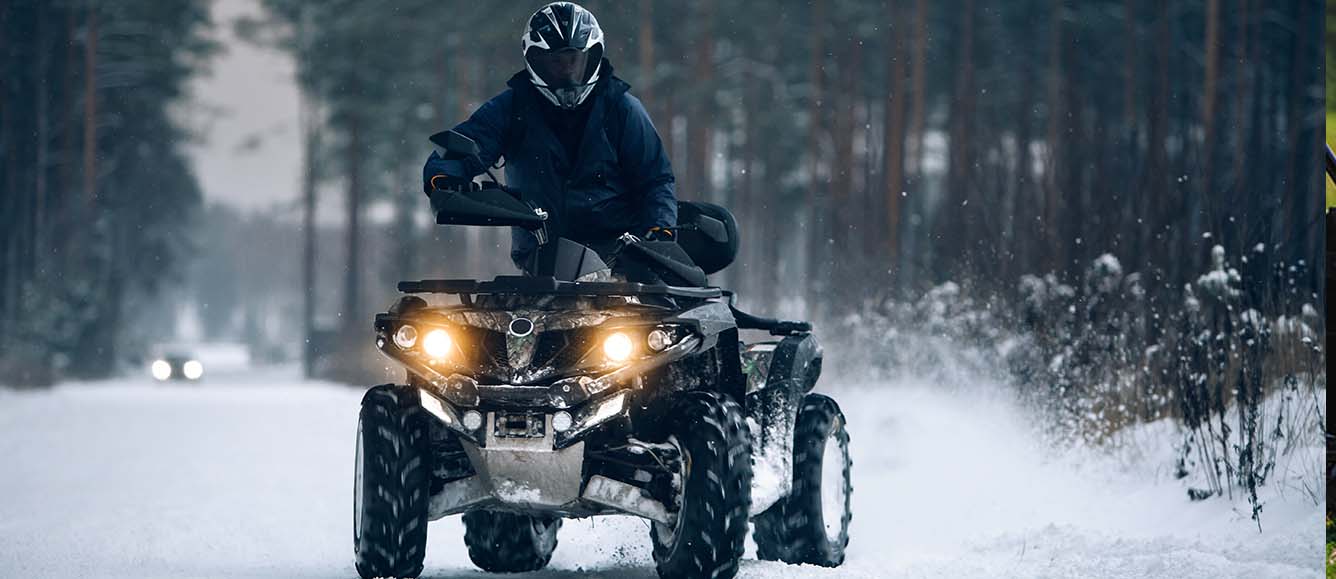
People living in colder regions should winterize their ATVs during the off-season. This means bedding down your vehicle in the garage until the weather is warm enough for you to ride again.
And it isn’t just about the cold weather. If you won’t be riding your quad for a while for any reason whatsoever, following below-mentioned steps will ensure your quad is in good shape when you decide to take it for a spin.
Storage
Most ATV owners park their ATV on the driveway, which is fine on regular days, but when it comes to winterizing your quad, you must invest in a good quality shed, or you can have one custom-made. A shed will protect your ATV from snow, corrosion and other environmental elements. If you can’t build a shed, cover your ATV with a waterproof tarp.
You will also want to place insulation under the tires to avoid direct contact with the cold ground.
Remove the battery
Extremely cold weather can wreak havoc on your ATV’s battery and affect its performance in the long run. Therefore, it is recommended to unhook the battery terminals before winterizing your ATV. If your ATV is going to sit outside in sub-freezing temperatures, remove the battery altogether and store it somewhere warm and dry, especially when your ATV has a lithium battery. Lead-acid batteries, on the other hand, can sustain cold temperatures to a certain extent, but it’s better to avoid the risk anyway.
Clean and Lubricate
It is important to clean and lubricate your ATV before bedding it down for the winter. This will protect your vehicle from corrosion and will make spring start-up a breeze.
Start with a gentle pressure wash and once the moisture dries off, lubricate parts that are susceptible to corrosion. These include chains, cables, sprockets, exhaust pipe, lug nuts, etc.
Fuel System
Although the fuel in your ATV can withstand extremely cold temperatures, it is recommended to add fuel stabilizer before winterizing. Ideally, you should use an alcohol-free stabilizer. After adding the stabilizer, run the engine at idle until it reaches its optimal temperature to make sure the stabilizer is distributed through the fuel lines. To prevent condensation inside the fuel tank, top up the fuel just enough to level with the bottom of the filler neck.
Carburetor
If you are not using an alcohol-free fuel stabilizer, it is recommended to drain the carburetor completely. You can do this by shutting off the fuel valve and letting the engine run out of fuel. Allow the engine to cool down and then drain out the residual fuel in the carburetor by loosening the drain screw.
Pest Control
When the weather is cold and wet, pests and critters tend to hide in places where they can stay warm and feel safe. And thus, your ATV becomes an easy target. To restrict the entry of pests and to keep critters from nesting in your ATV, tape over the exhaust pipe and air intake. Use an anti-rodent spray on the cables, seat and between engine components.
Following these tips will help you store your ATV properly while nature runs its course. Last-minute preparation isn’t always helpful. So, begin the process as soon as the mercury starts to dip.